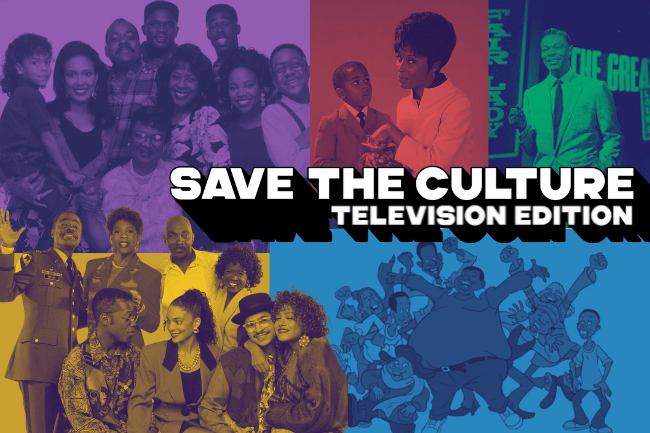Welcome to Part Two of SAVE THE CULTURE: The Essential Television Shows of the Black Experience! Here we will recap the last 10 of our top 20 Black television shows.
With support from Sheryl C. Johnson (B.A. ’86, Ph.D. ’25), associate professor in the Cathy Hughes School of Communications (CHSOC) and Jennifer Thomas (B.A. ’88), associate professor in the Department of Media, Journalism and Film and Director of the Annenberg Honors Program, we explain why these shows have persisted over time and will continue to have relevance into the next century.
Related Story
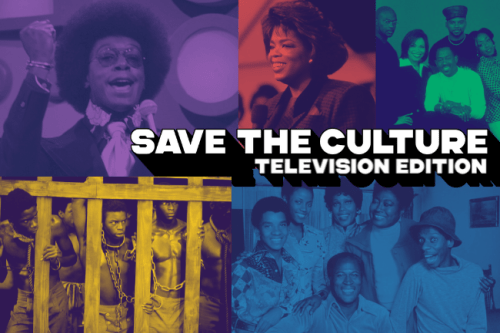
SAVE THE CULTURE: The Essential Television Shows of the Black Experience (Part One)
A Different World | 1987-1993 | NBC
Created by Bill Cosby as a spinoff of “The Cosby Show,” “A Different World” followed Denise Huxtable, played by Lisa Bonet, as she navigated her college experience. When Bonet departed and Debbie Allen (B.F.A. ’72, D.H.I. ’93) joined as a director, actor, and producer in season two, the show became a cultural phenomenon about the HBCU experience. Taking place at the fictional Hillman College, it addressed issues like racism, colorism, date rape, apartheid, and HIV AIDS all through the lens of the Black college experience.
Allen’s vision of the show focused specifically on the social and political life on HBCU campuses. She brought her own experiences as a graduate of Howard University as inspiration for storylines and even instituted a yearly trip to Spelman and Morehouse for the show’s writers to learn firsthand about the experience. Executives at NBC pushed back aggressively on her desire to tackle topical issues like the Persian Gulf War and the AIDS epidemic, but she pushed right back with the authority given to her by Cosby. To Allen, participation in sociopolitical issues is central to life on an HBCU campus. She told the Television Academy in 2011, “When the students on a campus are quiet politically, the nation is dead.”
“‘A Different World’ revolutionized the television landscape by portraying historically Black colleges and universities — drawing direct inspiration from institutions like Howard University — as epicenters of intellectual rigor, cultural affirmation, and social consciousness,” said Johnson. “By showcasing the complexities of Black student life, the series challenged media stereotypes and positioned HBCUs as powerful sources of leadership, identity, and generational transformation.”
“‘A Different World’ opened the eyes of America to a world few outside of African Americans knew was a reality. Hillman (like Howard) was Black Culture!” said Thomas. “Of course, depicting college life at an HBCU while a student at an HBCU was very relatable and fun to watch, from the storylines to the fashion! My late mother, who attended an HBCU (North Carolina Central “College”/ now University) even enjoyed the show and reflected about her own college experience. The show was intergenerational entertainment and definitely “must-see TV!”
“A Different World” is credited with increasing awareness and enrollment for HBCUs nationwide, inspiring more students to choose HBCUs for their college experience. According to a CNN report, HBCU enrollment jumped 26% between 1976 and 1994, with nearly all of the increase occurring between 1986 and 1994.
The Jeffersons | 1975-1985 | CBS
“The Jeffersons” is the longest running Black television show and one of the longest running sitcoms of all time. George Jefferson originally appeared as a supporting character on Norman Lear’s “All in the Family.” Appearing in 15 episodes, George Jefferson was Archie Bunker’s neighbor in Queens, NY. The two were constantly at odds due to Bunker’s racism and the two characters’ stubborn and prideful attitudes before an eventual thawing of tensions.
“The Jeffersons’ highlighted Black entrepreneurship and showed that through our resilience, we could amass wealth and live the American dream too. It reframed Black masculinity and showcased the strength of Black women as well as interracial relationships,” said Johnson. Weezy’s best friend Helen Willis, portrayed by Howard alum and Alpha Kappa Alpha member Roxie Roker (B.F.A. ’52) was one half of the first interracial couple in a regular, recurring role on American television.
“Unlike the Evans family in ‘Good Times,’ ‘The Jeffersons’ succeeded in improving their socioeconomic conditions,” said Thomas. “George Jefferson (Sherman Hemsley) owned a chain of dry-cleaning stores and lived on the Upper East Side. He was unapologetically Black, unapologetically loud, and maybe a little stereotypical, but he had his wealth, his wife (Weezy), his son (Lionel, played by “Good Times” creator Mike Evans), and was his own man. He made his own money and was loud, but he was lovable. The show addressed a lot of racial issues. While “All in the Family,” the Jeffersons’ parent show, were the first to address race in a way where the central character was racist but loveable, the Jefferson’s did it in their own way. George Jefferson was completely himself. He talked about “honkeys” and things that people really didn’t say at the time. It was a cultural moment because he addressed those issues in ways that a lot of mainstream Black people did not.”
Family Matters | 1989-1998 | ABC
On air for 9 years, “Family Matters” is the second longest running Black television show of all time. A spinoff of ABC’s “Perfect Strangers,” the show focused on “Perfect Strangers” beloved elevator operator Harriet Winslow and her family. With “Die Hard” breakout star Reginald VelJohnson as the family’s hardworking policeman patriarch, the creators, William Bickley and Michael Warren, wanted to create a blue-collar version of “The Cosby Show.” The show struggled to find success until the introduction of the super intelligent, nerdy next door neighbor Steven Q. Urkel (played by Jaleel White) in episode 12. Meant only to be a guest star, Urkel infused infectious comedy and excitement into the show, catapulting it to stratospheric success. He had holiday television specials, merchandise, and more. In every episode, Steve Urkel was destroying something with his ambitious science experiments gone wrong (super termites, a cloning machine, the Urkel Bot, etc.), or his extreme clumsiness, traits that gave birth to the iconic slogan “Did I do that?” The slapstick comedy style of his character made the show a powerful comedic force, but the storylines always maintained a focus on more meaningful issues.
While the show covered issues like gun violence, bullying, gang violence, illiteracy in the Black community, child abandonment, and other social issues, ultimately, “Family Matters” was about the importance of family. Steve Urkel became the heart of the show, showing the tight knit Winslow family and the audience what true love and loyalty looked like. Although he often clashed with them due to his clumsiness and many science experiments gone wrong, he always looked out for them and encouraged them to do the same for the ones they loved. He was the embodiment of the show’s title, doing everything he could to make sure his chosen family was always happy and protected.
Living Single | 1994-1998 | Fox
“Living Single,” created by Yvette Lee Bowser, was one of the most popular shows of the 90s and was trailblazing for centering its story on young Black professionals. The show promoted Black excellence, and its success served as inspiration for other successful shows like “Friends” and “Insecure.” The characters — Khadijah Jones, editor and publisher of Flavor magazine played by Queen Latifah, receptionist and aspiring actor Synclaire James played by Kim Coles, attorney Maxine Shaw played by Erika Alexander, stockbroker Kyle Barker played by Terrence C. Carson, gossip Regine Hunter, played by Kim Fields, and handyman Overton Wakefield played by John Henton — delivered a representation of Black life that had not yet been seen on television.
In the creation of the show, Lee Bowser was intentional about depicting the realities of Black life in the city. The characters on the show lived together in a Brooklyn brownstone while navigating differing personalities and careers. “It’s interesting because there’s certain aspects of certain characters that we’ve seen — we’ve seen Clair Huxtable, we’ve seen the black lawyer, but she was a mom,” Lee Bowser said. “So, we really hadn’t seen [stories about young black people in the city], and I know that they obviously existed in the real world,” she told The Atlantic in 2018.
The character of Maxine “Max” Shaw was particularly impactful in inspiring young Black women to become lawyers. High profile figures Rep. Ayanna Pressley, Marilyn Mosby, and Stacey Abrams have cited the character as a major influence on their desires to work in law and public service. A research study conducted by The Representation Project found that one-in-three Black female lawyers say that Maxine Shaw directly influenced their decision to go to law school and two-thirds of Black female professionals say she showed them they could have a successful career and fulfilling personal life.
Fat Albert and the Cosby Kids | 1972-1985 | CBS
“Fat Albert and the Cosby Kids,” often referred to simply as “Fat Albert,” is an educational cartoon series, created, produced by and starring Bill Cosby. The show was Cosby’s mechanism to teach children about basic values and issues of the day, particularly those facing urban Black communities. Inspired by his own upbringing in the housing projects of North Philadelphia, the character of Fat Albert was meant to go against popular stereotypes. In 2013, Cosby told ArtsBeat, “Overweight people in the ‘20s, ‘30s, and ‘40s, on the Broadway stage and in movies, they immediately became the funny person, the clown… I changed Albert, making him the leader and giving him the intelligence.”
“Unlike a lot of other cartoons, they covered a lot of heavy topics: substance abuse, poverty, bullying, racism, Black culture, empowering Black youth,” said Johnson.
“Fat Albert” enjoyed enormous success during its run, inspiring a comic book series published between 1974-1979 and paving the way for Bill Cosby to create a similar kids cartoon in the late 1990s, “Little Bill.” A live-action adaptation starring Kenan Thompson was released by 20th Century Studios in 2004. The show was lauded for its value as an educational tool. In 1976, Cosby earned his Doctor of Education from the university of Massachusetts Amherst with his dissertation titled An Integration of the Visual Media Via 'Fat Albert And The Cosby Kids' into the Elementary School Curriculum as a Teaching Aid and Vehicle to Achieve Increased Learning.
“Bill Cosby, having his Doctor of Education, was masterful at knowing how to speak to the impact and importance of the kids’ views,” said Thomas. “Fat Albert became a loveable and kind character.”
That’s So Raven | 2003-2007 | Disney Channel
Raven-Symoné began working in Hollywood as an infant and got her first major role as Olivia on “The Cosby Show” in 1989. But when she landed the lead role on “That’s So Raven” on Disney Channel, she became a cultural phenomenon. While she was originally cast to play the role of the best friend on “Absolutely Psychic,” she tested so well with the audience that the show shifted focus and made her the lead character. At the time of its original run, it was the only show on Disney Channel with a Black lead. It was nominated for two Emmy Awards and spawned two spinoff shows, “Cory in the House” and “Raven’s Home.”
With the success of “That’s So Raven,” she accomplished a feat that no other actress on Disney Channel had before: She became the first Disney star to have a show named after her (and the youngest Black female ever at 17), the first to produce her own show, and the first to make it to 100 episodes.
A broad physical comedy, the series follows Raven Baxter, a fashionable teenage psychic who has partial visions of the future and often tries to intervene, ending up creating the visions she tries to prevent. Her parents, younger brother and two best friends help her keep her powers a secret while, at the same time, managing the typical social and personal challenges of growing up. While it touched on issues like racism, body image, and bullying, “That’s So Raven” provided representation for young Black kids on the children’s networks that rarely reflected them. Rich Ross, president of Disney Channel Entertainment told the Los Angeles Times in 2003, that the goal in creating the show was to create “a show that would allow a girl to do [comedy] that would appeal to boys and girls and their families.” “That’s So Raven” explored issues big and small that children were facing and gave them a healthy example of how to handle them.
Raven continued to have success in television and film with roles in “Kim Possible,” “The Cheetah Girls,” and “Raven’s Home.” The success of “That’s So Raven,” paved the way for other Black female stars like Keke Palmer, China-Anne McClain, and Zendaya (the next Disney star to produce her own show), as well as for other successful shows on the network like “Hannah Montana” and “Wizards of Waverly Place.”
The Nat King Cole Show | 1956-1957 | NBC
Although “The Nat King Cole Show” was only on for one year, it was groundbreaking in the American television landscape. Esteemed jazz singer Nat King Cole became the first Black person to host a national network television series in the United States. The originally 15-minute variety show eventually expanded to 30 minutes and attracted stars like Ella Fitzgerald (D.Mus. ’80), Harry Belafonte (D.H. ’01), and Tony Bennett, among others, and enjoyed notable success. Unfortunately, racist backlash made the show challenging to produce, much of its cost being paid for by NBC and Cole himself. While he danced with guests Eartha Kitt and Ella Fitzgerald when they visited, he was prohibited from coming in close contact with white women who were guests. When performing with stars like Dinah Shore and Peggy Lee, a desk, piano, stool or other prop was strategically placed between them.
“Being that my area of expertise is advertising, I have talked about this show a lot. While the show was number one and did very well in its time slot, it was hard to get advertisers to back it because they didn’t want to be associated with a Black man.” said Johnson. “The backlash it received made it nearly impossible to secure national advertising and ultimately led to the show’s cancellation.” In 1957, Cole made the decision himself to end the show.
Sister, Sister | 1994-1999 | ABC/The WB
Starring real-life twins Tia Mowry as Tia Landry and Tamera Mowry as Tamera Campbell, “Sister, Sister” follows the twins after they reunite after being separated at birth. “Sister, Sister” was a positive representation of a non-traditional family. The sisters were each adopted by a widowed father (Tim Reid) and single mother (Jackée Harry) who put their drastic differences in economic class and personality aside to blend their families and give their daughters the lives they deserved. The show occasionally touched on serious issues but primarily focused its comedic lens on grounded experiences of Black girls growing up and the importance of their experiences in sisterhood. No matter what the sisters encountered, dealing with college applications, romantic relationships, etc., they always came together to solve their problems. “Sister, Sister” gave young Black girls a complete and layered representation of themselves in a way that hadn't been seen before on television. During its run, the show earned 4 NAACP Image Awards.
In its later seasons, “Sister, Sister,” featured notable guest appearances including Sherman Hemsley, Kobe Bryant, Boyz II Men, and Kirk Franklin, as well as Taraji P. Henson (B.F.A. ’95, D.H.L. ’22) and Gabrielle Union in some of their earliest television appearances. The show launched the careers of the Mowry sisters and their little brother Tahj. After the show, they continued to have dominant careers on Disney Channel, paving the way for stars like Raven-Symoné and became a staple in children’s television throughout the 2000s.
Julia | 1968-1971 | NBC
In 1968, “Julia” became the first TV series to be led by a Black woman. Tony award winning actress Diahann Carroll played Julia Baker, a nurse working in a high-end medical office in the aerospace industry and raising her son as a single mother after her husband was killed in the Vietnam War. Creator Hal Kanter developed the show after a conversation with NAACP Executive Director Roy Wilkins (LL.D. ’65) in 1967. Kanter had been involved in the creation of “Amos ‘n’ Andy” and “The Beaulah Show,” which primarily displayed racist portrayals of Black people, and he wanted to create a new show with more positive depictions.
“As a young girl, I learned and committed to memory an appreciation of seeing a beautiful black woman who was a professional and had a well-mannered and thoughtful child,” said Thomas.
“Julia was huge for Black women,” said Johnson. “It was the first time you had a Black woman as the lead and not in a domestic role, but as a professional and as a single mother. It challenged those decades of portrayals of Black women in roles as nannies or sidekicks. “Julia” showed a positive depiction of the independence of Black women.
“To have brown skinned Black women in that type of role didn’t happen at that time. At the time, Brown skinned Black women weren’t typically portrayed as being beautiful or intelligent and Julia was all of that. That depiction was something that gave young black women agency,” said Johnson.
I, Spy | 1965-1968 | NBC
At this time a standup comedian with no acting experience, Bill Cosby made his television debut in this show in 1965. With “I, Spy,” Cosby became the first Black person to star in a TV drama in the United States. Even more, he had an equal role to the show’s co-lead, played by Robert Culp. Racial issues were seldom dealt with directly, but the show was revolutionary for depicting Cosby’s character, Alexander Scott, as an equal and a friend rather than a sidekick or stereotype. Scott was an intellectual hero, and Cosby earned three Emmy Awards for Best Lead Actor during the show’s run. It attracted a host of guest stars. Cicely Tyson played a supporting role in the premiere episode and stars including Gene Hackman, Eartha Kitt, and Ricardo Montalban appeared later.
Inspired by the first James bond movie and the spy craze that followed, “I, Spy,” focused on the characters’ international spy missions. The idea of casting a Black man as equal to a white one was controversial. The potential success or failure of the show was a topic of debate for more than a year before it premiered. When it finally did, televisions stations in the South refused to broadcast it. Seeing the main characters sharing a table at a restaurant, a hotel room, or a bus seat are things we take for granted today but were revolutionary for the time.
While “I, Spy,” wasn’t hugely popular during its original run, reruns continued running through the 70s and 80s. “I, Spy” kicked down the door for Black television shows and actors to follow.
Why Bill Cosby Is Not In Our Graphics
As you may have noticed, Bill Cosby is not featured in either of the graphics representing this story. As you will have learned after completing this edition of our SAVE THE CULTURE series, Bill Cosby and his shows are the bedrock of Black television and the reason for the revival of sitcoms as a whole. However, given the controversy surrounding his personal life, we left him out of the graphic, so as not to detract from the value of the piece. Allegations of inappropriate behavior in his personal life, including sexual assault, are shockingly egregious. However, the profound impact he had on television cannot be erased. The shows he created fundamentally changed the way Black people were perceived in popular culture. The shows were unapologetically Black, highlighting life on an HBCU campus in "A Different World", literature, music, and art from Black creatives on "The Cosby Show," and teaching children important lessons about growing up on "Fat Albert and The Cosby Kids." His mission always remained to make meaningful art that uplifted our community and offered educational value for young people.
Nothing in the article should be construed to dismiss the seriousness of the allegations against Cosby. At the same time, his 50+ year career in Hollywood as a creator, writer, actor, and producer, was the blueprint for creators to follow. The success that Black people have been able to achieve in the television industry and beyond cannot be separated from his work. As Karl Rove, senior advisor to former President George W. Bush, said on Fox News after the election of President Barack Obama, "We've had an African-American first family for many years in different forms. When 'The Cosby Show' was on, that was America's family. It wasn't a Black family. It was America's family."
###
Keep Reading
-
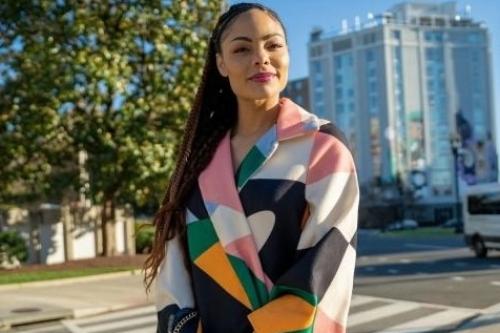 News
NewsHoward Faculty Nicole Jenkins Joins Global Initiative to Set a New Guinness World Record for World Afro Day 2025
Sep 11, 2025 4 minutes -
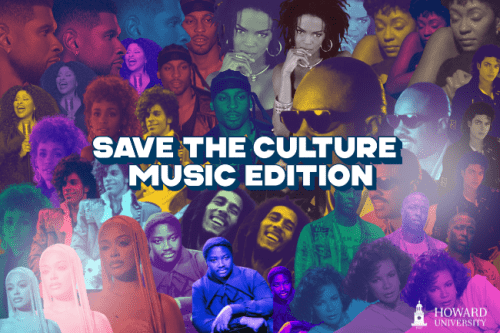 Diaspora
DiasporaSAVE THE CULTURE: Choosing Less than 25 Black Artists to Represent the “Best” of Black Music Is Nearly Impossible
Aug 8, 2025 13 minutes -
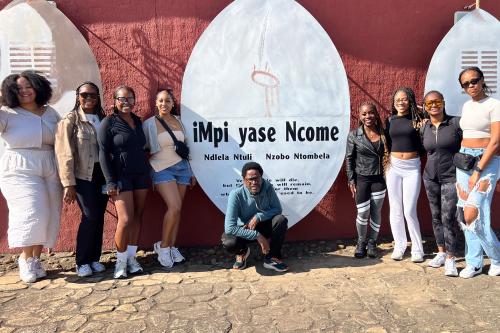
Find More Stories Like This
Are You a Member of the Media?
Our public relations team can connect you with faculty experts and answer questions about Howard University news and events.
Submit a Media Inquiry

